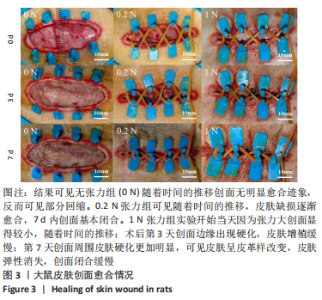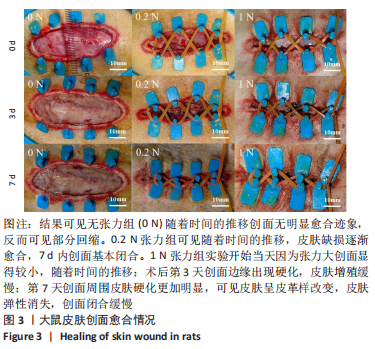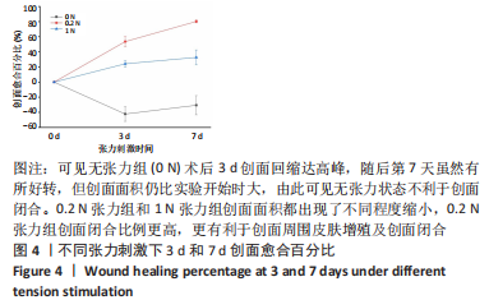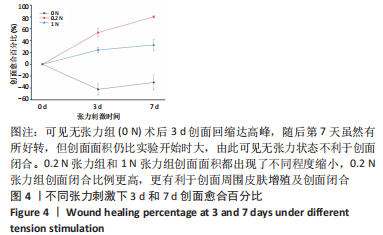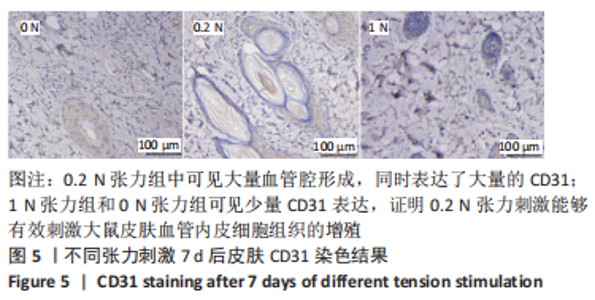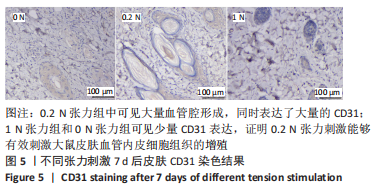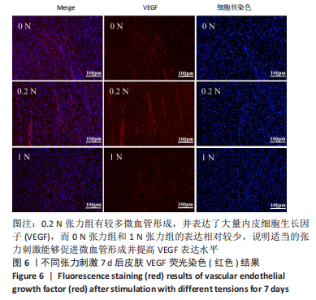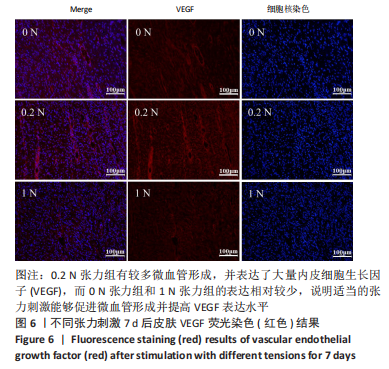[1] SORG H, TILKORN DJ, HAGER S, et al. Skin Wound Healing: An Update on the Current Knowledge and Concepts. Eur Surg Res. 2017;58(1-2): 81-94.
[2] RODRIGUES M, KOSARIC N, BONHAM CA, et al. Wound Healing: A Cellular Perspective. Physiol Rev. 2019;99(1):665-706.
[3] FUCHS C, PHAM L, HENDERSON J, et al. Multi-faceted enhancement of full-thickness skin wound healing by treatment with autologous micro skin tissue columns. Sci Rep. 2021;11(1):1688.
[4] 田芙蓉, 田立杰, 田峰, 等. 应用多种皮瓣治疗足踝部皮肤软组织缺损[J]. 中国医科大学学报,2010,39(1):74-75.
[5] 陈全贵. 应用张力-应力法则牵张再生治疗皮肤缺损[D]. 南宁: 广西医科大学,2018.
[6] 梁尊鸿, 潘云川, 徐家钦, 等. 异体异种脱细胞真皮与自体刃厚皮复合移植的比较[J]. 中国组织工程研究与临床康复,2009,13(41): 8048-8052.
[7] CHEN X, LU F, YUAN Y. The Application and Mechanism of Action of External Volume Expansion in Soft Tissue Regeneration. Tissue Eng Part B Rev. 2021;27(2):181-197.
[8] HARN HIC, OGAWA R, HSU CK, et al. The tension biology of wound healing. Exp Dermatol. 2019;28(4):464-471.
[9] RADOVAN C. Breast Reconstruction after Mastectomy Using the Temporary Expander. Plast Reconstr Surg. 1982;69(2):195-208.
[10] AUSTAD ED, PASYK KA, MCCLATCHEY KD, et al. Histomorphologic evaluation of guinea pig skin and soft tissue after controlled tissue expansion. Plast Reconstr Surg. 1982;70(6):704-710.
[11] KRYSTYNA AP, ERIC DA, KENNETH DM, et al. Electron Microscopic Evaluation of Guinea Pig Skin and Soft Tissues “Expanded” with a Self-Inflating Silicone Implant. Plast Reconstr Surg . 1982;70(1):37-45.
[12] AUSTAD ED. Evolution of the Concept of Tissue Expansion. Facial Plast Surg. 1988;5(4):277-279.
[13] 熊斌, 黄金井, 张超. 利用扩张皮瓣取大面积全厚皮片游离移植的临床应用与研究[J]. 中国美容医学,2008,17(2):170-172.
[14] AZZI JL, THABET C, AZZI AJ, et al. Complications of tissue expansion in the head and neck. Head Neck. 2020;42(4):747-762.
[15] BALASUBRAMANI M, KUMAR TR, BABU M. Skin substitutes: a review. Burns. 2001;27(5):534-544.
[16] WONG VW, AKAISHI S, LONGAKER MT, et al. Pushing back: wound mechanotransduction in repair and regeneration. J Invest Dermatol. 2011;131(11):2186-2196.
[17] OGAWA R, HSU C K. Mechanobiological dysregulation of the epidermis and dermis in skin disorders and in degeneration. J Cell Mol Med. 2013; 17(7): 817-822.
[18] LEDWON JK, KELSEY LJ, VACA EE, et al. Transcriptomic analysis reveals dynamic molecular changes in skin induced by mechanical forces secondary to tissue expansion. Sci Rep. 2020;10(1):15991.
[19] PAUL NE, DENECKE B, KIM BS, et al. The effect of mechanical stress on the proliferation, adipogenic differentiation and gene expression of human adipose-derived stem cells. J Tissue Eng Regen Med. 2018; 12(1):276-284.
[20] 买合木提·亚库甫, 阿里木江·阿不来提, 艾合买提江·玉素甫, 等. 真空负压吸引与绑鞋带技术修复小腿骨筋膜间室综合征:减张效果的比较[J]. 中国组织工程研究,2014,18(39):6392-6396.
[21] KUMAR A, PLACONE JK, ENGLER AJ. Understanding the extracellular forces that determine cell fate and maintenance. Development. 2017; 144(23):4261.
[22] KUEHLMANN B, BONHAM CA, ZUCAL I, et al. Mechanotransduction in Wound Healing and Fibrosis. J Clin Med. 2020;9(5):1423.
[23] LEE T, VACA EE, LEDWON JK, et al. Improving tissue expansion protocols through computational modeling. J Mech Behav Biomed Mater. 2018; 82:224-234.
[24] 李鑫,刘凤永,袁宏军,等. SD大鼠原位肝癌模型构建及影响学检查[J]. 介入放射学杂志,2018,27(12):1177-1181.
[25] YANG J, CHEN Z, PAN D, et al. Umbilical Cord-Derived Mesenchymal Stem Cell-Derived Exosomes Combined Pluronic F127 Hydrogel Promote Chronic Diabetic Wound Healing and Comp lete Skin Regeneration. Int J Nanomedicine. 2020;15:5911-5926.
[26] OKONKWO UA, DIPIETRO LA. Diabetes and wound angiogenesis. Int J Mol Sci. 2017;18(7):1419.
|
